
YKvision/iStock
You love it when you see it, but how well do you know decorative molding? In fact, naming each may present a challenge. Is it dentil or crown? Casing or a chair rail? And even if you can identify this special millwork, you might not see the real deal (carefully crafted from hardwoods) much in the future.
That’s because this feature is typically skimped on by builders today due to cost, notes Karen Gray-Plaisted of Design Solutions KGP. “But it’s unfortunate because decorative molding takes a room from just a rhombus to one that has character and charm,” she laments.
Decorative molding certainly isn’t new (it’s been around for centuries), but it’s hotter than ever. Here’s more on decorative moldings, including their history and types to seek out as you house hunt or renovate.
Molding history
Photo by Union Studio, Architecture & Community Design
“Molding has long added depth, elegance, and finish to Victorian and Colonial-style homes,” reports Beverly Solomon of the eponymous design firm.
This detail was crafted by the Greeks and Romans as well as our Colonists using hand planes with special blades to cut the shapes. By the time of the Industrial Revolution, machine-cut moldings dropped in price and were snapped up by the masses.
Decorative molding is defined as the trim around doors and windows, molding around the ceiling, baseboards on the perimeter of a room, and any type of paneling, such as shiplap and wainscoting, explains Gray-Plaisted.
It can be made from softwoods, hardwoods, composite materials, polyurethane, stone, and polystyrene with fiberglass, she adds. Today’s composites don’t require sanding or priming, are easy to cut, and are even easier to paint than real wood, notes Solomon.
1. Crown molding
Photo by J. Hirsch Interior Design, LLC
Crown molding is literally what you think—an overhead crowning touch that flares out in the space where the walls and ceiling meet. Also known as cornice molding, it may be elaborate, with decorative cutouts, or simple and linear (Shaker) in design.
This molding can conceal imperfections and is made to sit on both the wall and ceiling to enhance its visibility from below, adds Jeff Valenti, senior merchant of millwork at the Home Depot. Hundreds of patterns and styles are available from many architectural eras, including Corinthian, Doric, contemporary, and art deco.
2. Chair rail
This thin wooden detail bisects a room horizontally at heights between 36 and 45 inches, and is designed to protect the wall from dings and scratches caused by chairs.
“A chair rail creates a visual break in the room or wall and can be a great way to incorporate two paint colors, one above the rail and the other below,” says Kevin Busch, vice president of operations at Mr. Handyman.
3. Picture frame molding
Photo by Monks Home Improvements
Picture frame moldings are just what they seem—square or rectangular shapes that look like empty pictures. They add a smart level of detail to walls in hallways and stairs. The addition of picture frame molding can imitate paneling on an otherwise plain expanse of wall. Frame molding can also be used on the ceiling to mimic a tray or coffered ceiling.
Wainscot, the wooden panels usually applied to the lower level of walls, often accompanies chair rails, says Busch. “Wainscot may be capped with a chair rail and has the same advantages as a stand-alone rail but adds another visual element to the wall.”
4. Casing
Photo by Smith & Vansant Architects PC
“Casing, which can be applied both inside and out, is the molding that goes around the perimeter of window or door openings,” explains Busch.
Typical casings in these spots are 2 to 3 inches wide, though deeper designs are available to create a decorative shelf.
“Casing refines the appearance of doors and windows by framing them in a smooth continuous surface that can be customized to underscore the room’s design,” adds Valenti.
5. Dentil
Photo by Clare Gaskin Interiors
Originating in Greek architecture, dentil molding is a decorative pattern of teethlike blocks. Dentil was usually built into crown molding and can be found in historic homes, particularly Victorians, both inside (around doors and ceilings) and out (along rooflines). Dentil is a higher-end application as its production is more expensive, and installing it is labor intensive. (Each block has to be cut and measured carefully and placed individually.)
6. Egg and dart
To identify this decorative molding, look for egg-shaped ovals interspersed with arrows, anchors, or V-shaped darts along a ceiling. Egg and dart (also called egg and tongue) is an ornamental detail that’s often paired with crown molding. Other intricate designs in this same vein include acanthus leaves and rope detail.
The post 6 Types of Decorative Molding to Glam Up Walls and Ceilings appeared first on Real Estate News & Insights | realtor.com®.
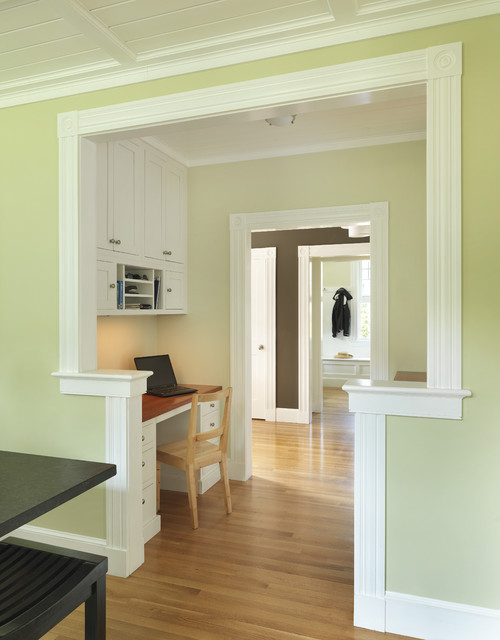
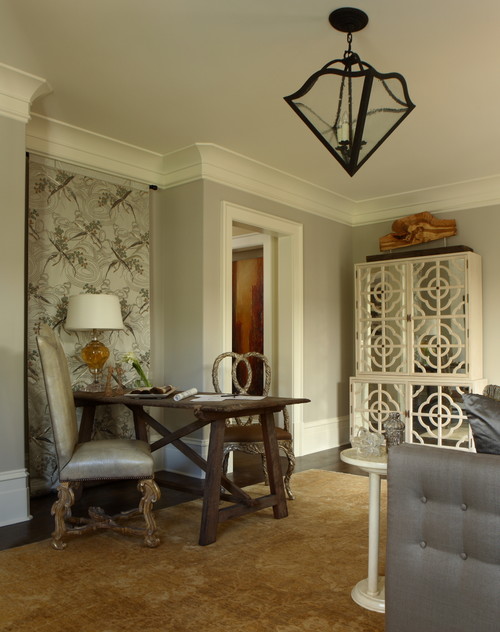
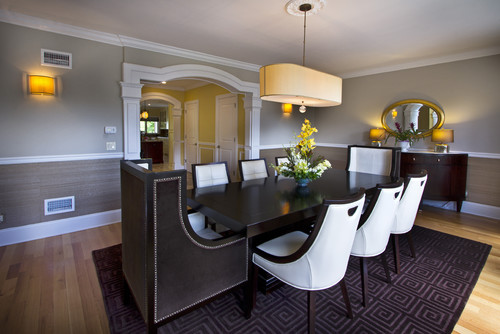
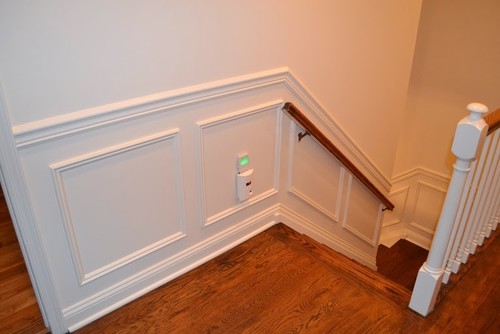
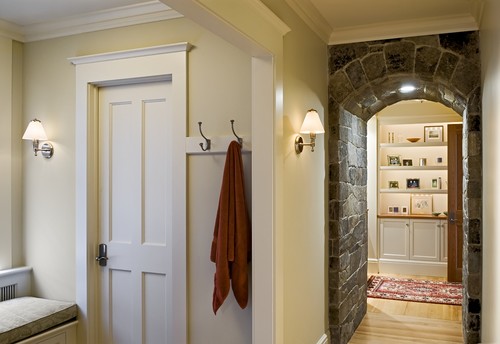


No comments:
Post a Comment